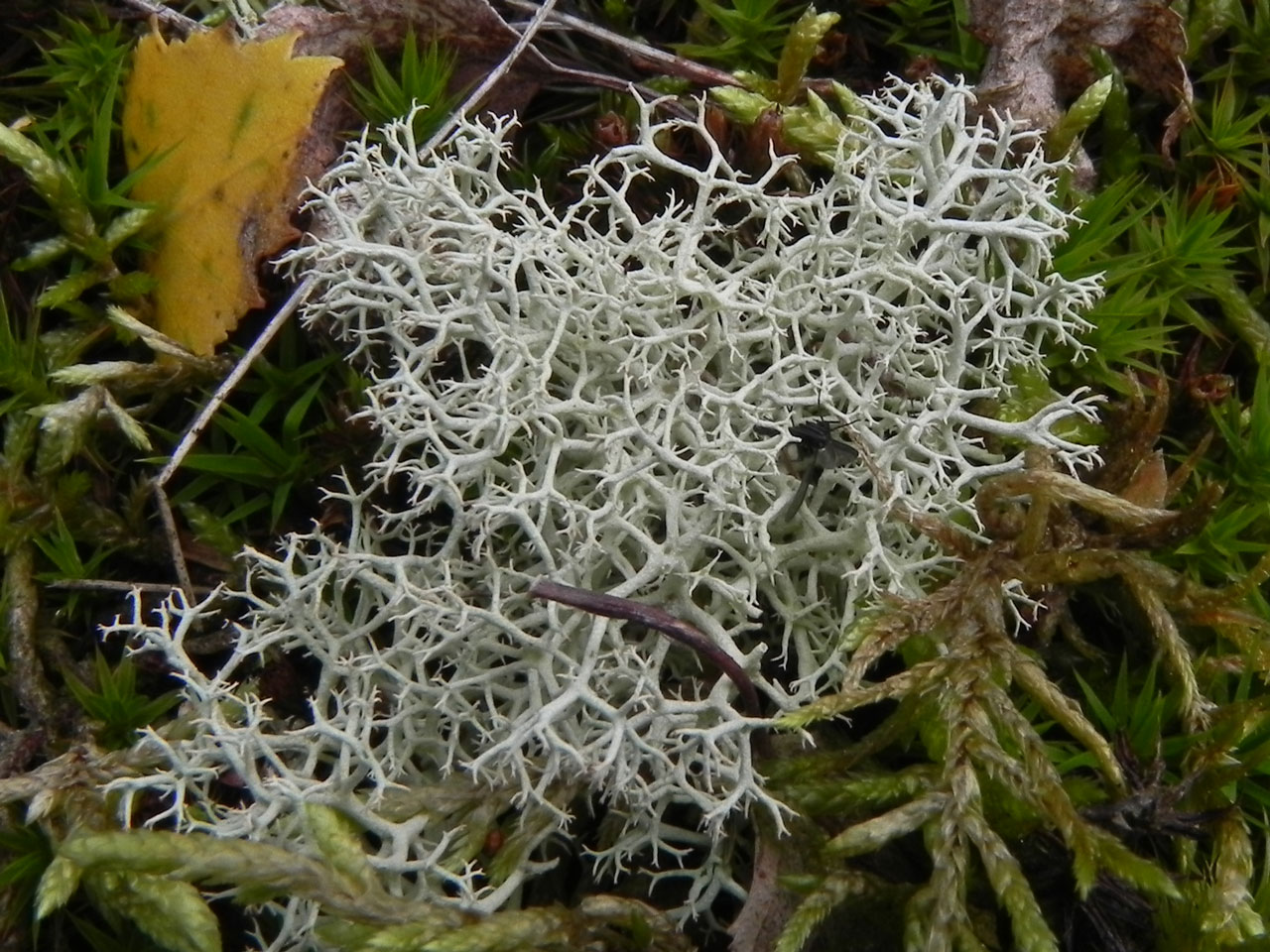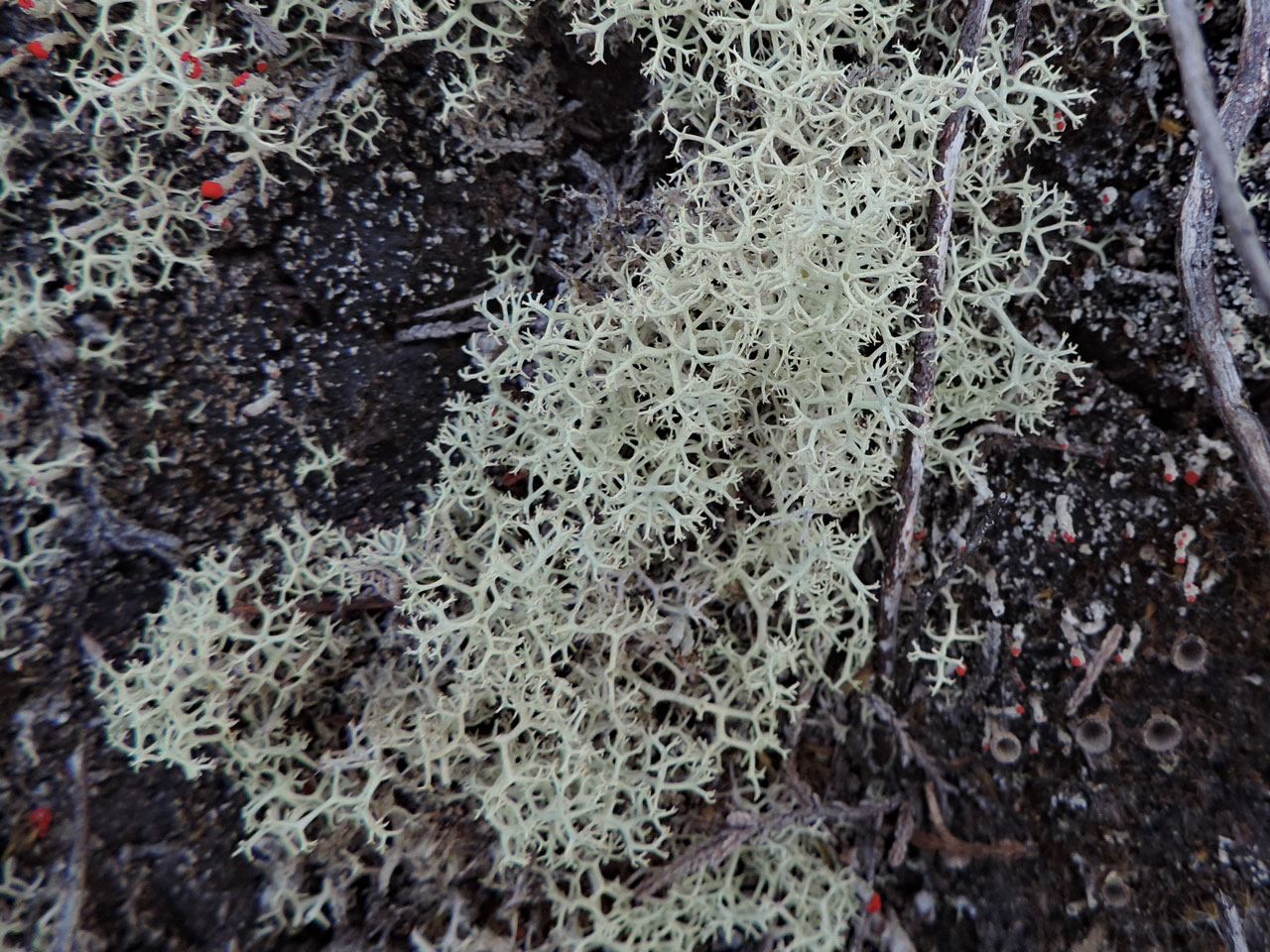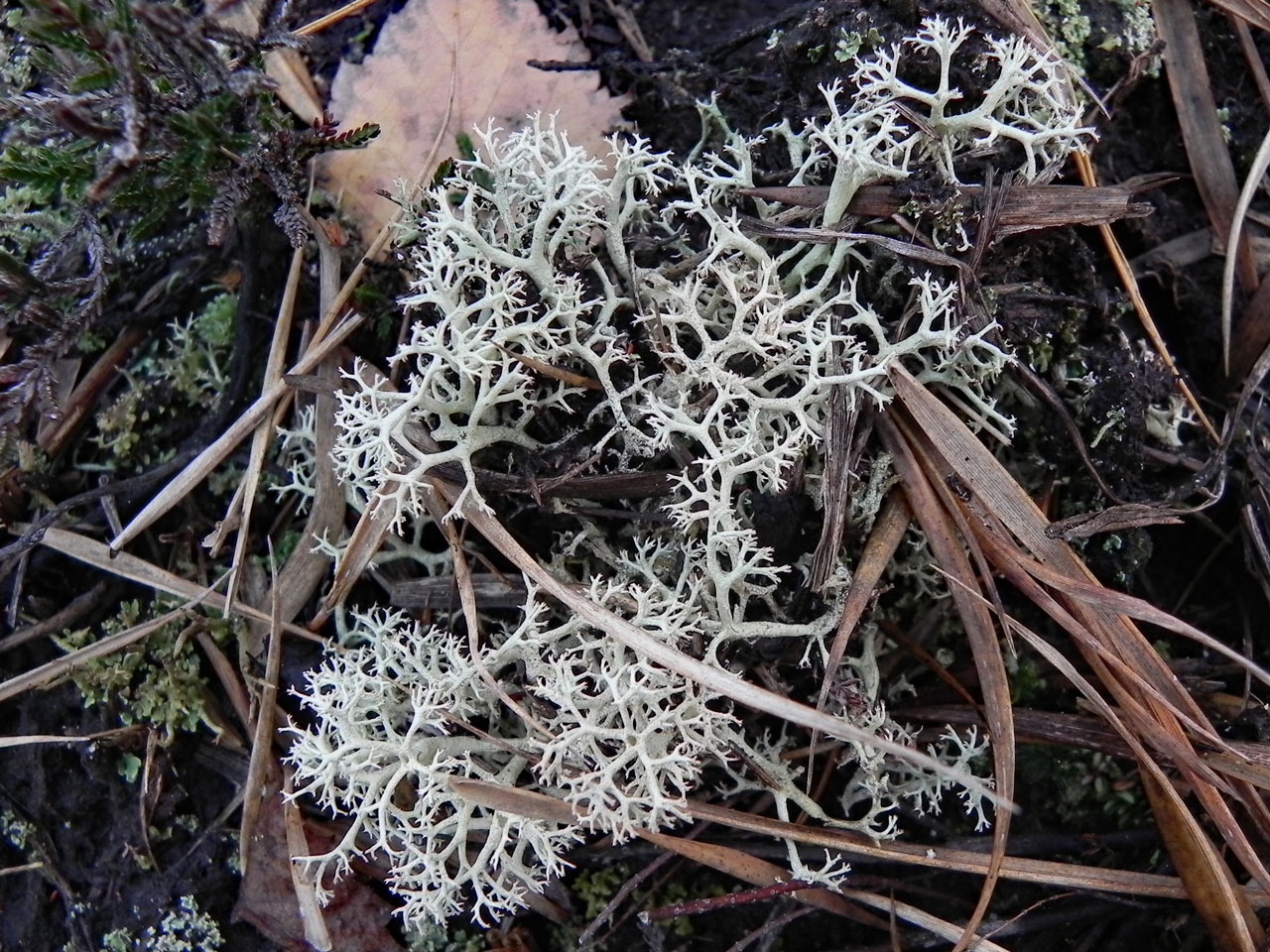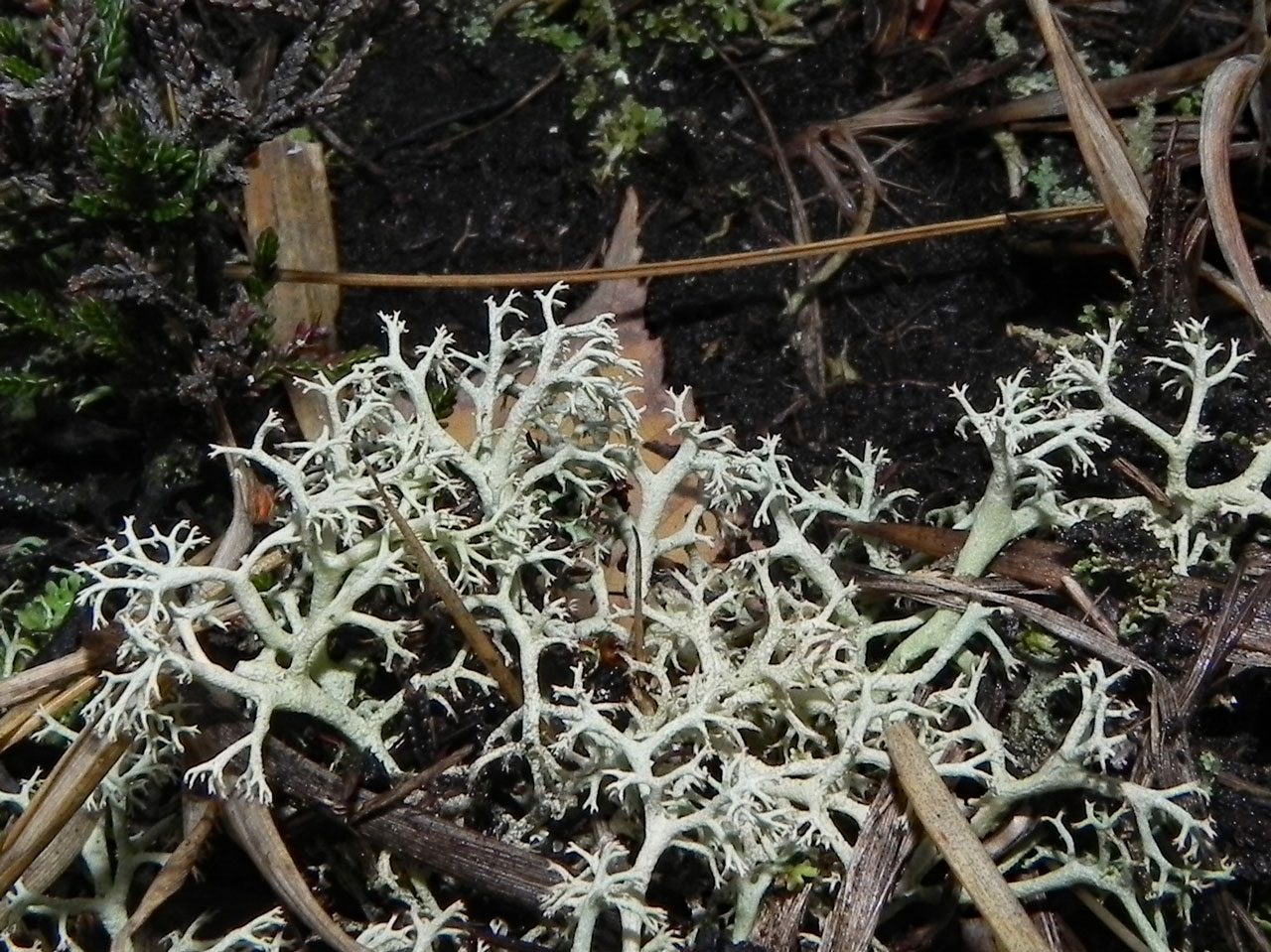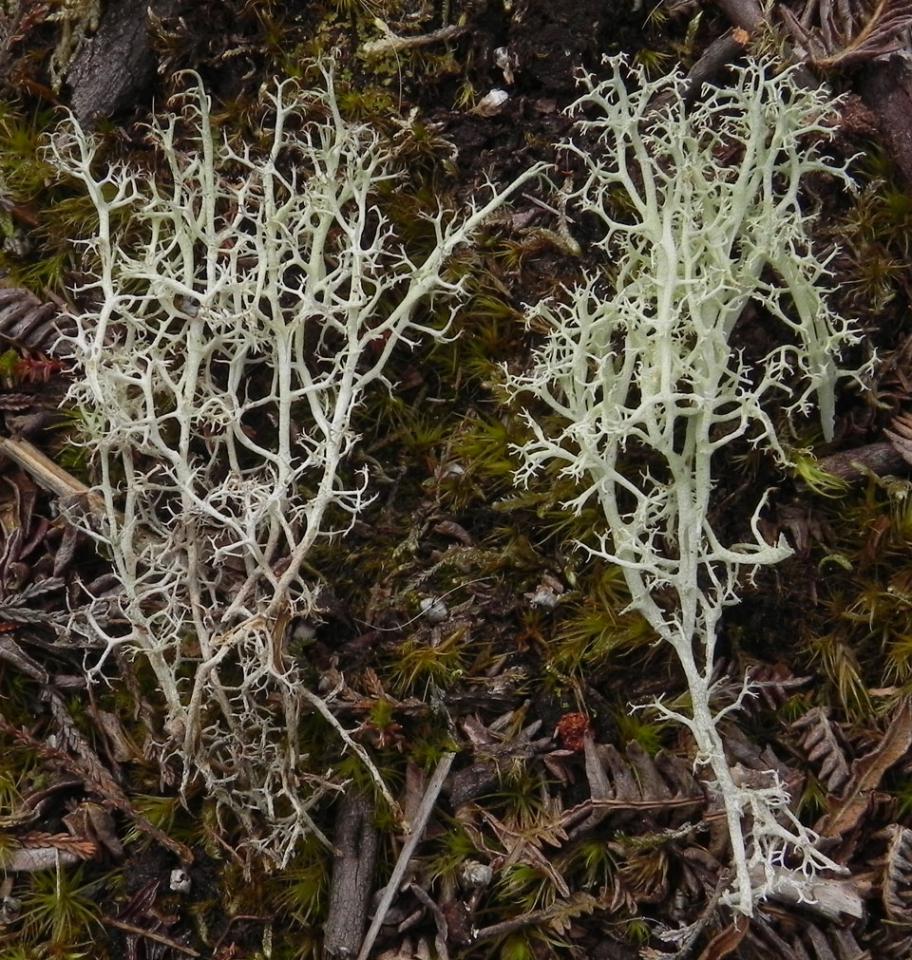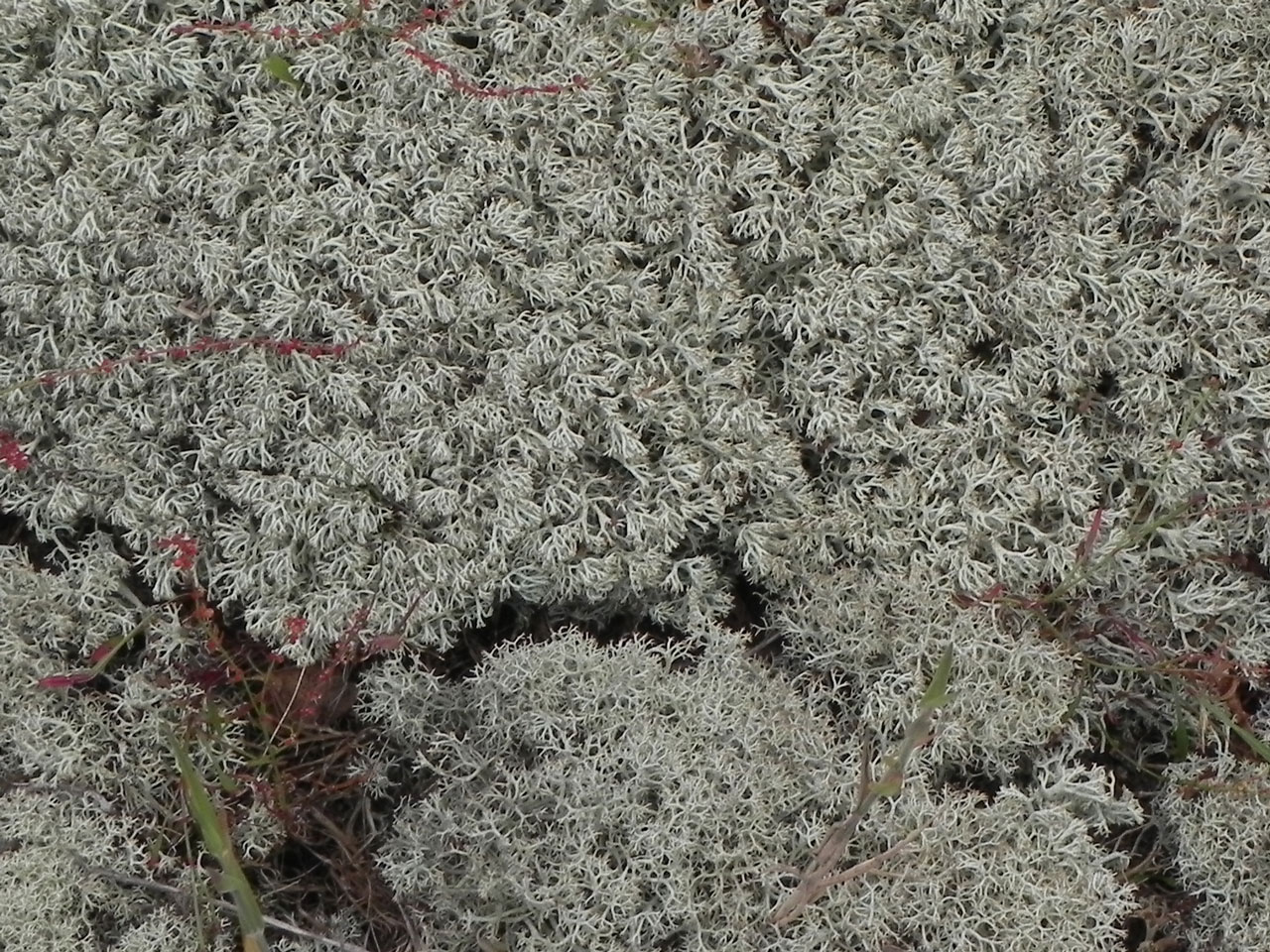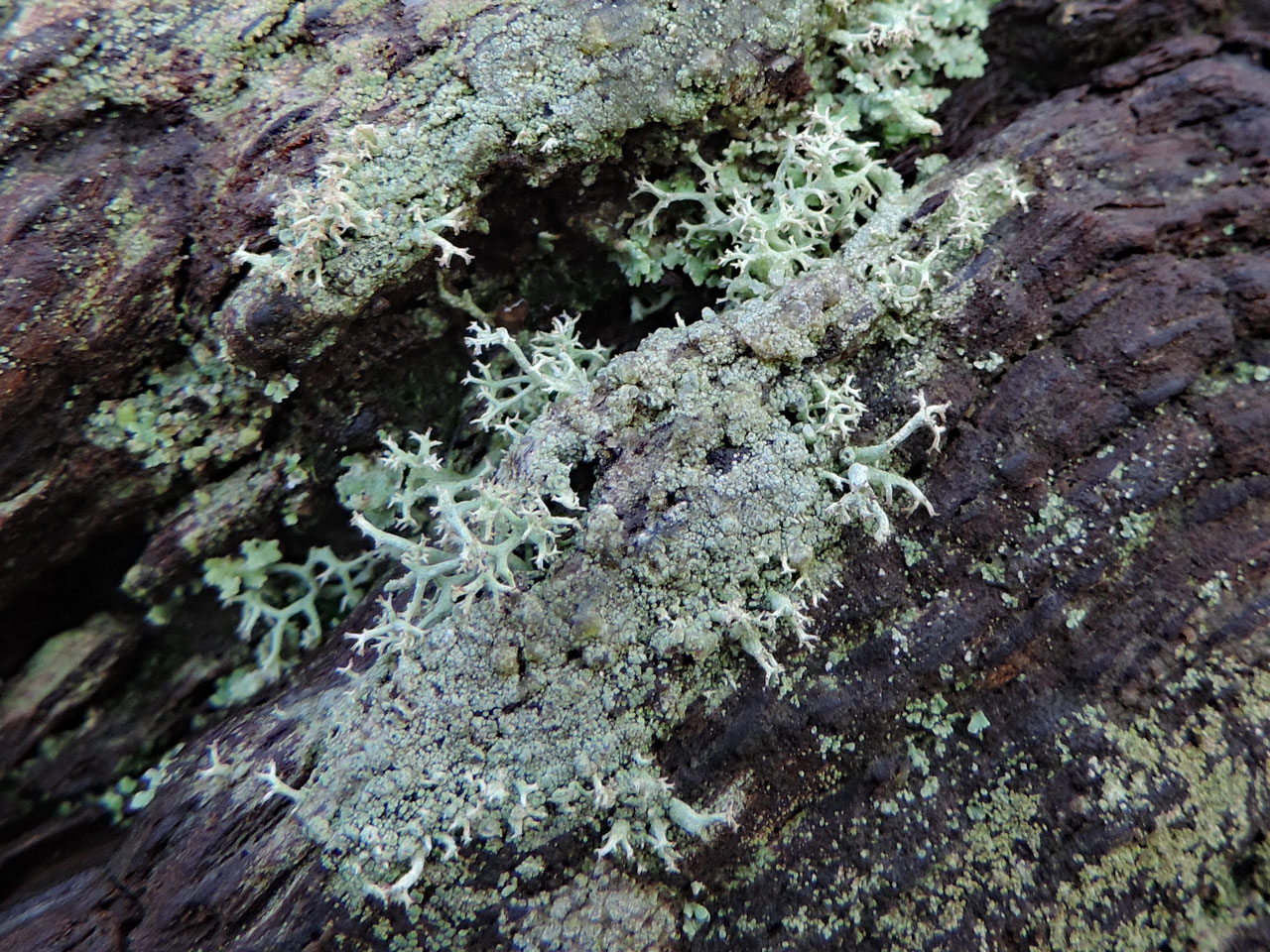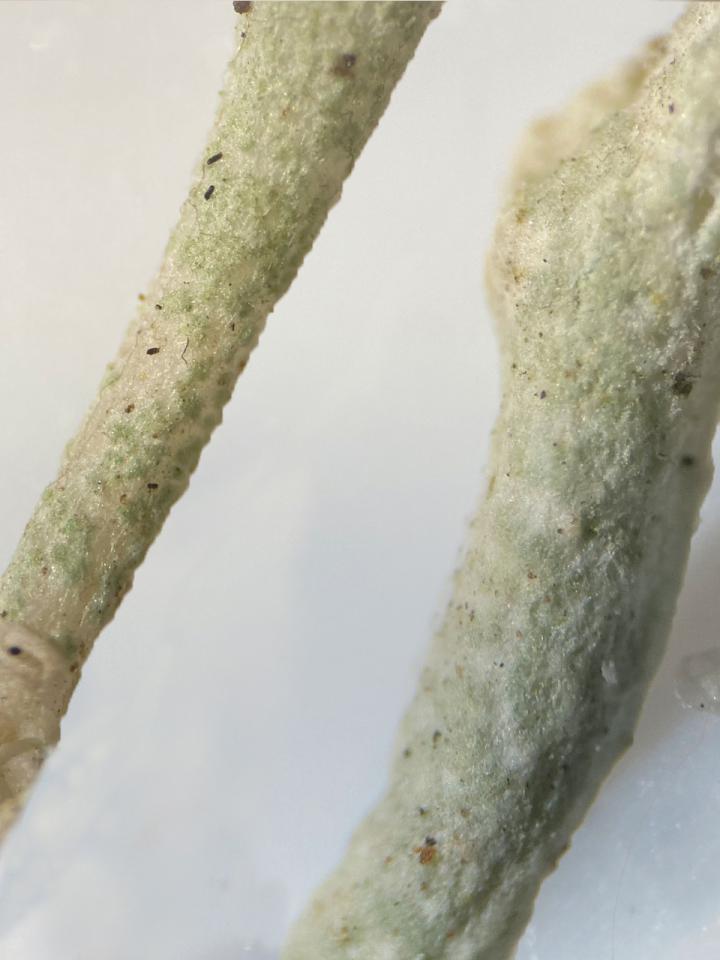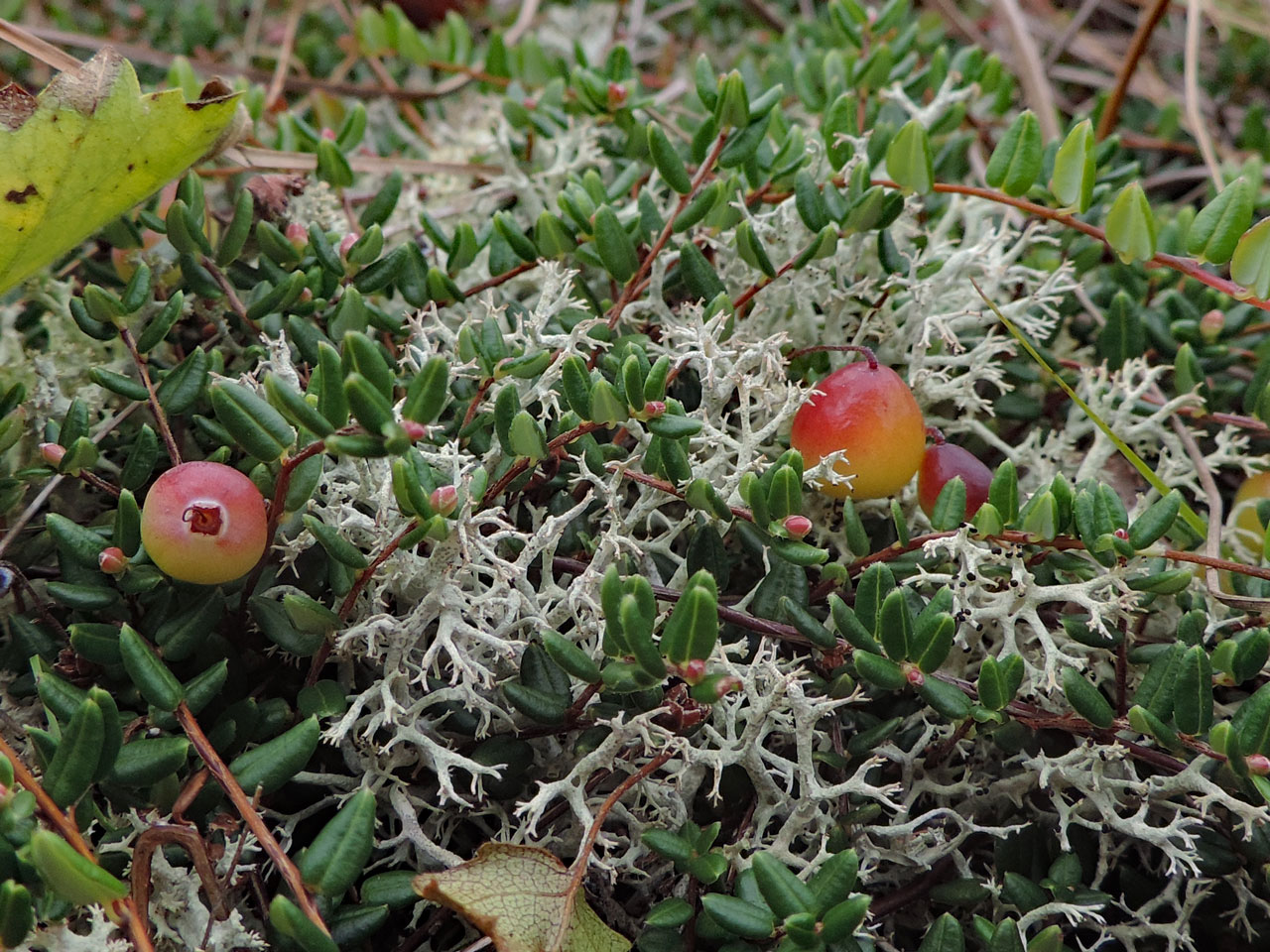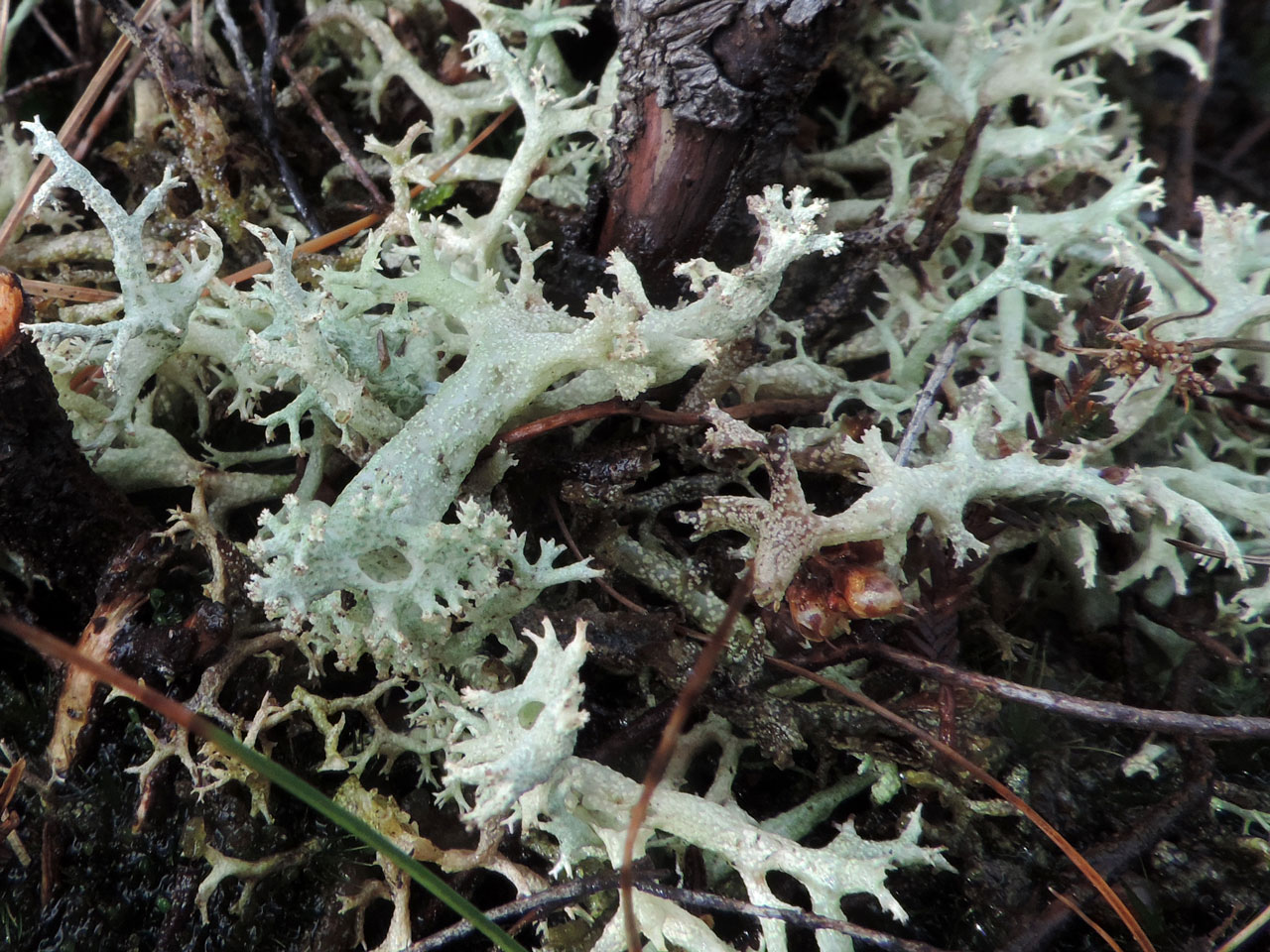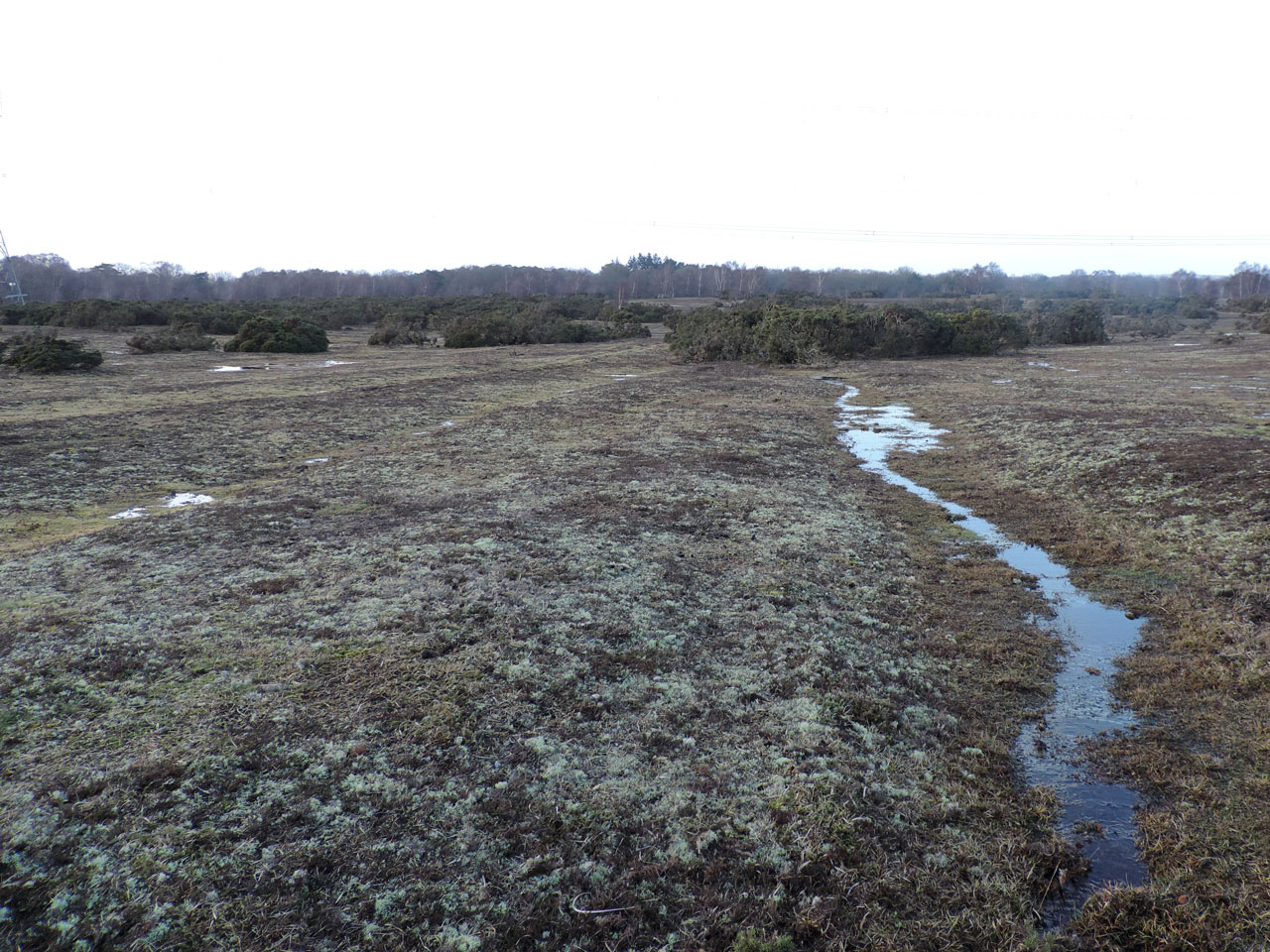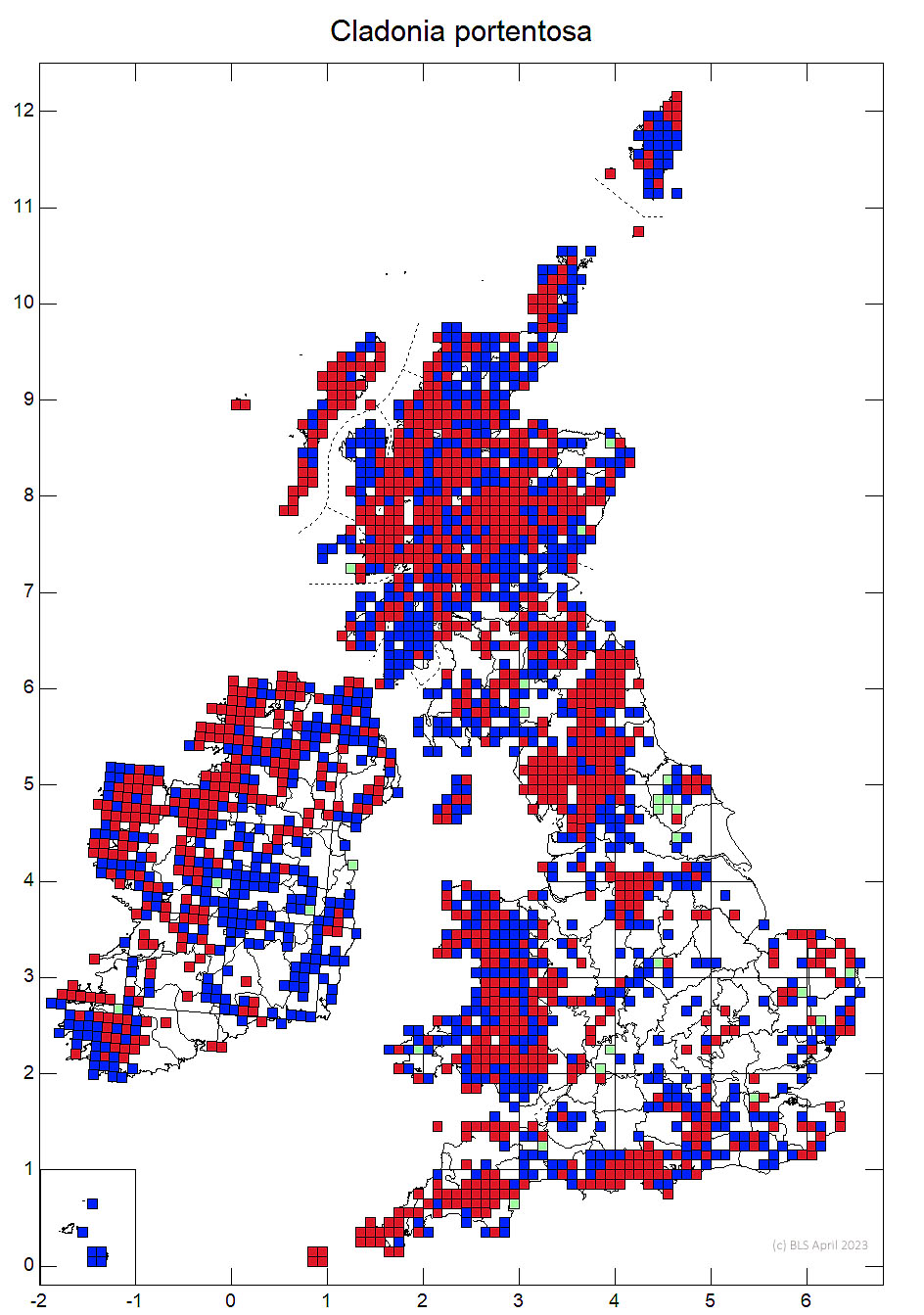Cladonia portentosa
Cladonia portentosa f. subimpexa
Cladonia sylvatica auct. p.p.
Cladonia portentosa is by far the commonest of the Reindeermosses in Britain and Ireland and, in many marginal areas, the only species found. It is most easily separated from all other Reindeermosses, apart from the very rare C. mediterranea, by the very bright blue-white UV fluorescence (perlatolic acid), which occurs in the lower part of the podetia within the cortex. Other more subtle morphological difference are described below. The lichen is ecologically robust and can dominate late succession communities in heathland, at the expense of lichen diversity, but can be ousted itself by vascular plant overgrowth very late in the succession.
Primary thallus crustose, evanescent. Podetia 4-10 cm tall, grey-green and often with a yellowish green tinge, the surface often roughened, areolate particularly towards the base, richly branched; terminal branches mostly ± erect, not orientated in one direction, forming broccoli-like, rounded heads, the branching predominantly trichotomous at the apices, often with perforated axils. Pycnidial jelly colourless. Thallus C–, K–, KC± yellow, Pd– or PD+ red (morphs previously referred to C. azorica), UV+ very bright blue-white at base of podetia (perlatolic and usually usnic acid, ±fumarprotocetraric acid).
Belongs to the Impexae clade. Characterised by the unorientated terminal branches, which can be straight or recurved, and distinctive chemistry (especially the presence of perlatolic acid). Very variable, often forming mats of neat tufts amongst low vegetation, sometimes with ± distorted main branches; ± inflated-bloated and grossly modified morphs can occur in boggy situations.
Some of the various forms can closely resemble other Reindeermoss species, especially those forms of C. portentosa with recurved branch tips. All species except C. mediterranea can be rapidly separated by the lack the UV+ very bright blue-white fluorescence (perlatolic acid). The perlatolic acid occurs at the lower part of the podetia within the cortex. Also in C. portentosa, even where the branches are recurved, they are not orientated in one direction across the podetium as in C. arbuscula and C. ciliata var. tenuis.
The loose broken cortex of C. portentosa exposes more algae, giving the podetia a distinct yellow green tinge as opposed to slivery colours of C. mediterranea or C. arbuscula. This colour difference can be distinct at several meters in good light. Cladonia rangiferina has a UV– and K+ yellow podetia. See C. mediterranea for the differences with this closely related but genetically distinct species. Cladonia stellaris is another related species but for which there are only doubtful 19th century records, see Cladonia stellaris for the differences with C. portentosa.
On heathlands, moorlands and dunes, also not uncommon on old leaning and fallen trees in open woodland; abundant in acid soil areas, more scattered in productivity lowlands. Isolated occurrences on acid substrates in post industrial sites suggests considerable powers of long distance dispersal. A very fire tolerant species, regrowing strongly after controlled fires, from unknown buried propagules, and occasionally by fresh podetia with algae regrowing from whitened surviving but scorched and algae free old podetia. In the latter stages of succession from fire or disturbance, it can dominate lichen rich vegetation at the expense of over all lichen diversity, before being lost itself to the overgrowth of vascular plants (Sanderson, 2017).

Throughout Britain and Ireland, except in the most base rich and productive environments.
Pino-Bodas, R., Sanderson, N., Cannon, P., Aptroot, A., Coppins, B., Orange, A. & Simkin, J. (2021). Lecanorales: Cladoniaceae, including the genera Cladonia, Pilophorus and Pycnothelia. Revisions of British and Irish Lichens 19: 1-45. Link
Sanderson, N. A. (2017) The New Forest Heathland Lichen Survey 2011 – 2015. A report by Botanical Survey & Assessment to Natural England, Forest Enterprise & The National Trust. Link
Text by Neil A Sanderson based on Pino-Bodas et al (2021)
